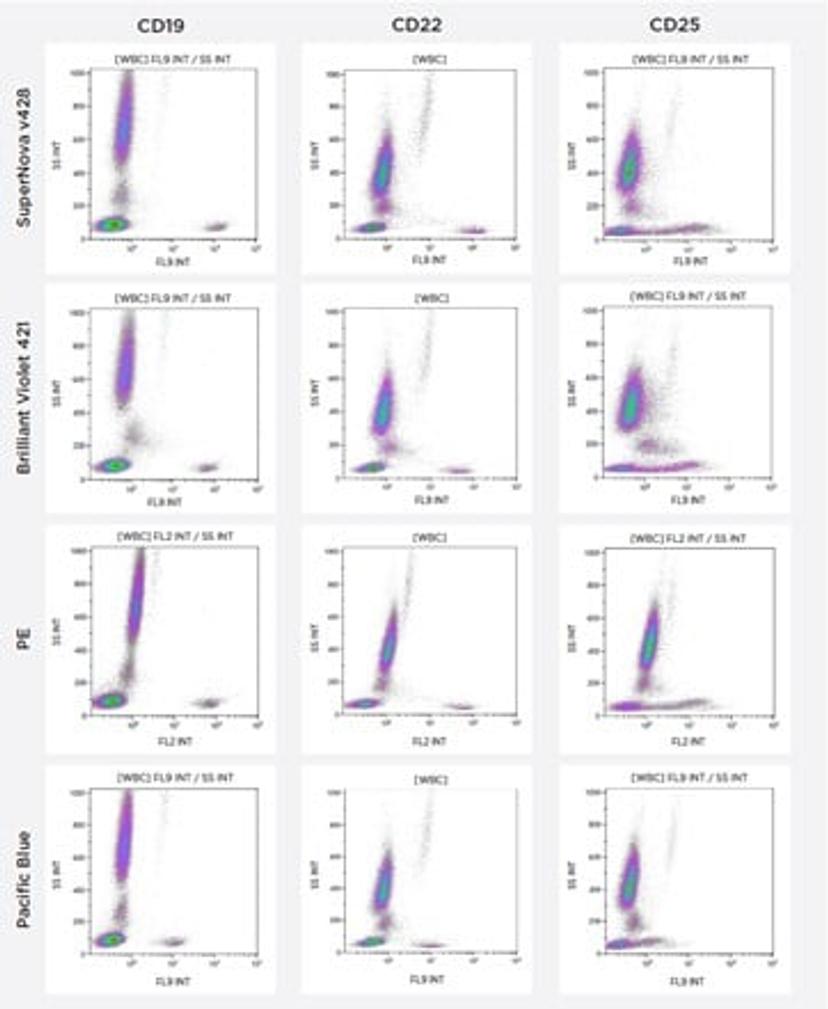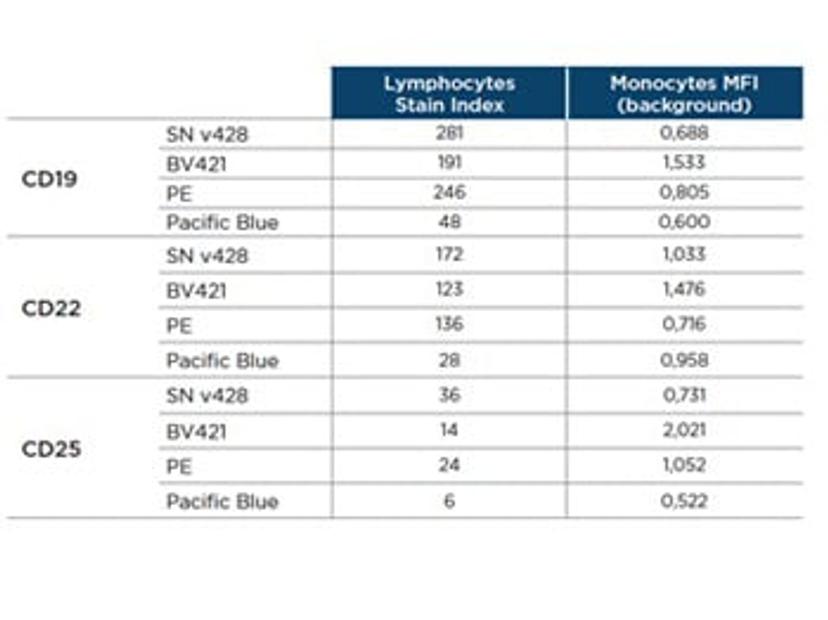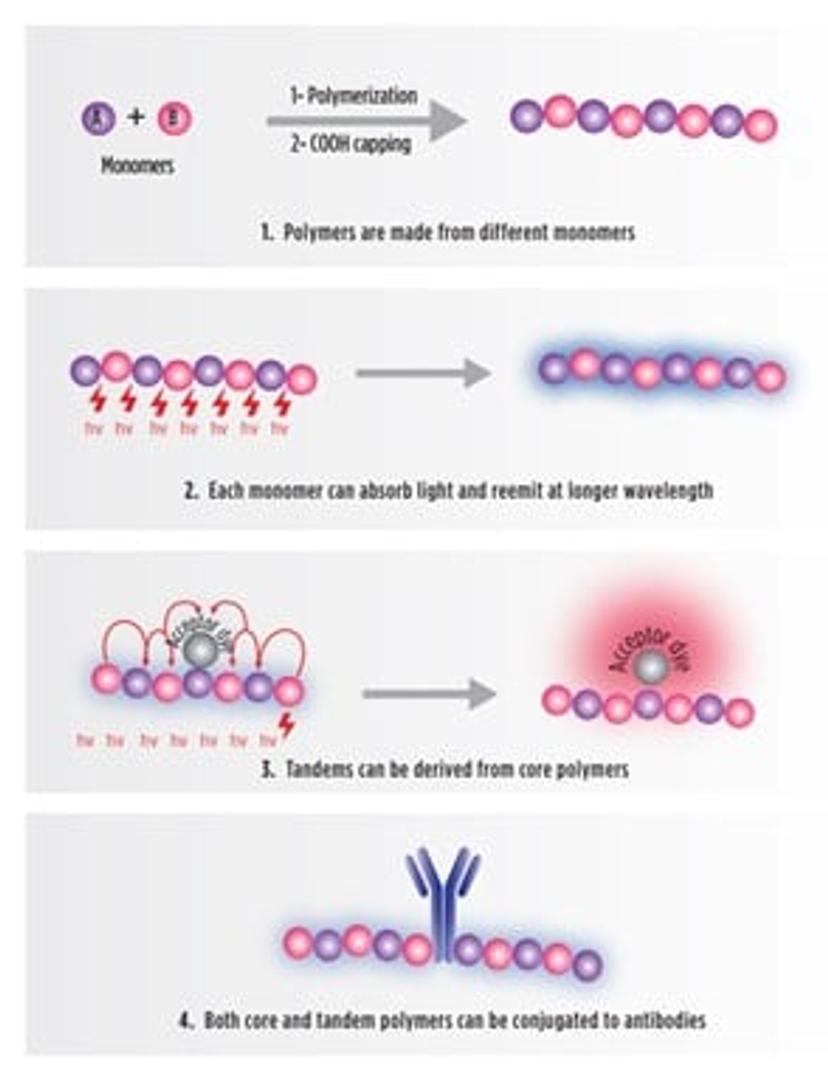Expanding the flow cytometry toolkit with next-generation polymer dyes
Guest editorial: Brice Ezzouaouy, Senior Product Manager, Beckman Coulter Life Sciences, outlines the challenges of dimly expressed markers and presents a solution
8 Apr 2021
Since the emergence of SARS-CoV-2, scientists have discovered more about the role of the immune system and cytokine-associated processes responsible for systemic immune reactions typical in patients with COVID-19.1 One tool for understanding these processes at a single-cell level is flow cytometry, which has become the standard method used in immunology to characterize multiple phenotypic and functional parameters of single cells, including cytokine analysis.
Despite advances in flow cytometry instrumentation, reagents and analytical software, several challenges remain. One is the need for better conjugated antibodies with critical properties, including brightness, stability and specificity. They also need to have narrow excitation and emission spectra, so that different fluorochromes can be used in combination to simultaneously analyze multiple parameters from one sample.
There are also challenges related to sensitivity. As well as fluorescent conjugates that can accurately detect highly abundant markers, conjugated antibodies that are sensitive enough to precisely detect and quantify low-abundance markers are also needed. A further complication encountered with antibody-based methods, including flow cytometry, is that of non-specific binding of antibodies to Fc receptors expressed by multiple immune cell types.2
Brighter options to detect dimly expressed markers

Developers continue to innovate and produce new types of fluorochrome conjugates. The latest offering, launched by Beckman Coulter Life Sciences, is SuperNova v428, the first of a series of next-generation polymer dyes3 that is optimally excited by a violet laser at a wavelength of 405 nm (Figure 1). SuperNova v428 has an excitation maximum of 414 nm and its emission wavelength peaks at 428 nm and is detectable using a 450/50 bandpass filter or equivalent. It is one of the brightest dyes excitable by a violet laser, systematically surpassing the brightness of other fluorochromes, including Brilliant Violet (BV) 421 – another polymer dye, phycoerythrin (PE) – a phycobiliprotein, and Pacific Blue – a small organic molecule (Figure 2).3 Compared with Pacific Blue, SuperNova v428 is 10 times brighter.

Due to the brighter signal, SuperNova v428 is also better for discriminating between negative and positive cell populations with significantly less noise.3 Moreover, conjugated to antibodies, SuperNova v428 generate significantly less non-specific staining, providing researchers greater confidence in their flow cytometry results (Figure 3).3

This was achieved through a new proprietary formulation containing unique additives to facilitate minimization of non-specific signals. The improved staining index of this next-generation polymer dye conjugate promises to be especially suitable for studying low abundance and dimly expressed markers.

The SuperNova v428 core polymer dye can be linked to acceptor dyes to create tandem polymer dyes, which share the same absorbance properties as the core, but absorbed light is transmitted through the polymer chain to the acceptor dye, which re-emits light at a higher wavelength (Figure 4). SuperNova v605 and v786 are the first tandems developed by Beckman Coulter Life Sciences, with maximum emission at 605 and 786nm respectively. Thanks to optimal FRET efficiency, the tandems maintain optimal brightness and provide additional options for flow cytometrists to assess dimly expressed markers. Beckman Coulter Life Sciences also developed a proprietary manufacturing process ensuring greater stability of the tandem dyes.
For Research Use Only. Not for use in diagnostic procedures.
Read more about the new SuperNova polymer dyes portfolio from Beckman Coulter Life Sciences>>
References
1. Cossarizza A, De Biasi S, Guaraldi G, et al. SARS-CoV-2, the Virus that Causes COVID-19: Cytometry and the New Challenge for Global Health. Cytometry Part A. 2020.
2. Easwaran A, Tomasulo M, Mukesh Mudgal BHS, et al. SuperNova v428: New Bright Polymer Dye for Flow Cytometry Applications. https://www.beckman.com/gated-media?mediaId=%7B0B9C63D3-1567-404C-883C-CD9665FC83F0%7D (accessed January 2021).
3. https://www.beckman.com/reagents/coulter-flow-cytometry/supernova-fluorescent-polymer-dyes
